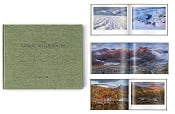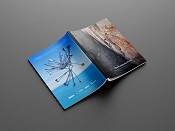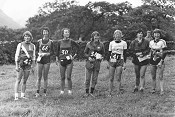
Martin Riddell gives a brief overview of the book.
Heinrich Harrer – mountaineer; prisoner of war; explorer; friend of kings and gods – and not forgetting a Nazi.
Harrer deals with his early exploits – the first ascent of the North Face of the Eiger no less – as almost a mere preface to his autobiography, no doubt realising that most who read the book will have already his famous book, The White Spider. This brief approach also allows him to gloss over his subsequent meeting with Hitler, his KDF sponsored cruise, and membership of the Nazi party, before touching briefly on the furore from 1997 where the question of Harrer being a Nazi was raised once again in the international press.
After the success on the Eiger Harrer returned to 'normal life' working as the trainer for the woman's Austrian Ski Federation team, and then for the Styrean SS ski team, before being accepted as a member of the German Himalayan Foundation Nanga Parbat Expedition.
It was on the Nanga Parbat that Harrer met Peter Aufschnaiter, who was to accompany him on their epic journey from the PoW camp they were interred in at Dehra-Dan in India, to the eventual meeting with the Dalai-Lama a few years later in Lhasa. This tale has been turned into the successful book Seven Years in Tibet and was made into a film starring David Thewlis and Brad Pitt.
Harrer describes briefly his time behind barbed wire, which seems far removed from the account of a PoW's suffering similar captivity within war ravaged Central Europe, but being held captive is still 'being held captive' so Harrer (and Peter Aufschnaiter) contrived separate escape attempts culminating in their successful escape on April 29 1944.
Their escape from Dehra Dun, two kilometres north east of Delhi over the Tsangchokla Pass at 5,300m and into Tibet, stopping in villages for a month or two before travelling further along the Himalayan plateau towards their eventual resting place of Lhasa is a real feat of survival in the true pioneer style – just awaiting a Ray Mears / Bear Grylls type documentary.
On their eventual reaching Lhasa they were granted an audience with the young Dalai-Lama where Harrer became something of a father figure/favourite uncle to the young God-King, opening his eyes and mind to European ideas, but also forming a strong friendship that lasted right up to Harrer's death.
Harrer then spends the rest of his autobiography detailing the many expeditions he went on, mostly funded by his close friend King Leopold III of Belgium. How may other climbers can count Kings and God-Kings as close friends/benefactors?
The list of Harrer's achievements is astonishing; first ascent of North Face of Eiger, first ascent of Carstenz Pyramid in New Guinea, first ascent of Mount Deborah and Mount Hunter in Alaska, before staring to look at his ethnological research with remote tribes of indigenous people in Asia, South America and Africa – a life spent exploring the world, either its mountains or its people.
An extraordinary life lead by a man who was able to make friends with people who could influence others to allow Harrer to lead the life he wished.
Harrer's achievements allow him to be thought of as in the same pantheon as the great climbers / explorers; H.W. Tilman and Eric Shipman, Hermann Buhl or Reinhold Messner.
His books (The White Spider and Seven Years in Tibet) are international best sellers yet they only touch on the early part of his life. The achievements of the remainder of his life are worth reading as well, although (unsurprisingly) if you are looking for further insights into the many controversies that have dogged his life you will not find them within his own autobiography.
An inspiring account of an inspirational man.
BEYOND SEVEN YEARS IN TIBET
My life before, during and after
Publisher: Labyrinth Press
Author: Heinrich Harrer
Translator: Tim Carruthers
Retail Price: £25.00
ISBN: 978-1-921196-00-3










Comments